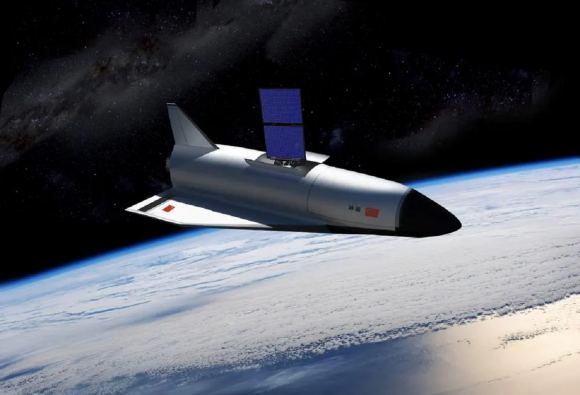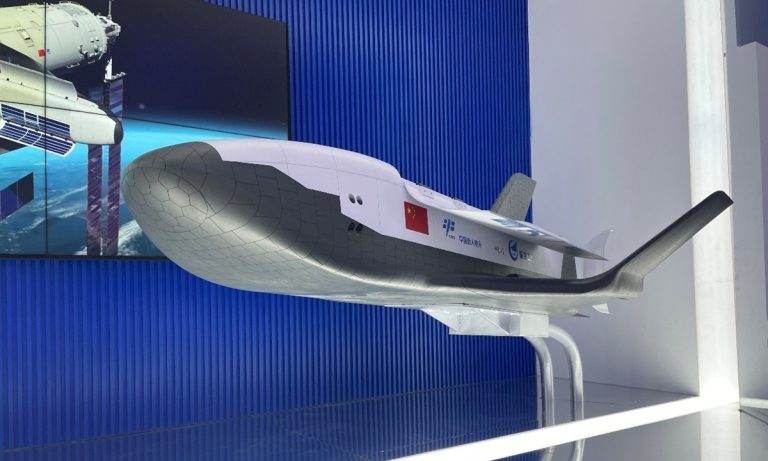Haolong Cargo Shuttle: China’s Ambitious Space Transport Project Begins
The Haolong Cargo Shuttle marks a milestone in China’s space industry. As a reusable spacecraft, it aims to revolutionize cargo transport to the Tiangong Space Station. China’s focus on cost-effective, autonomous, and advanced space technology highlights its commitment to becoming a global leader in space exploration. This project is a key part of China’s expanding commercial and governmental space industry, poised to grow exponentially.
Summary
- China’s Haolong Cargo Shuttle project, introduced at the Zhuhai Air Show 2024, will support the Tiangong Space Station.
- The Haolong shuttle has entered the engineering development phase, with a design inspired by the US Space Shuttle.
- Developed by the Chengdu Aircraft Design and Research Institute, the shuttle is fully autonomous and reusable.
- It has a wingspan of 8 meters (26.25 ft) and a length of 10 meters (33 ft), making it comparable to the X-37B and Shenlong spaceplane.
- The Haolong shuttle will use solar panels to generate energy in space and will autonomously dock with Tiangong.
- The shuttle’s payload bay and docking mechanisms are optimized for efficient cargo transfer.
- Another spacecraft, Qingzhou, is being developed alongside Haolong to support China’s low-cost space logistics.
- Qingzhou will have a cargo volume of 27 cubic meters and use the reusable Lijian-2 rocket.
- China’s space industry is projected to be worth 2.34 trillion yuan ($323.35 billion) by the end of 2024.
- Reusable technology is central to China’s future space missions, reducing costs and increasing commercial opportunities.
- The Haolong and Qingzhou spacecraft are paving the way for China’s ambitious space goals and deeper space exploration.
Main Article
China’s Haolong Cargo Shuttle project was unveiled during the 2024 China International Aviation and Aerospace Exhibition, held in Zhuhai from November 12th to 17th, 2024. This biannual event, backed by the Chinese aerospace sector, has become a major platform for showcasing new space and aviation technologies. The Haolong shuttle is part of China’s growing efforts to expand the operational capacity of the Tiangong Space Station, solidifying the country’s prominence in space.
According to Fang Yuanpeng, the chief designer, the Haolong shuttle has moved from the design phase to the engineering development stage, with a public debut anticipated soon. Fang explained, “The Haolong can receive maintenance similar to an aircraft after landing, so it can conduct another mission.” Fang’s statement indicates the level of reusability being prioritized in this project, a key feature inspired by the retired US Space Shuttle but with more advanced autonomy.
Design and Specifications
The Haolong Cargo Shuttle boasts a design with advanced aerodynamics. Measuring 8 meters (26.25 ft) in wingspan and 10 meters (33 ft) in length, the shuttle prioritizes a high lift-to-drag ratio to optimize its atmospheric reentry and landing efficiency. Though smaller than the Space Shuttle, which had a length of 56.1 meters (184 ft), Haolong’s design is reminiscent of smaller, more maneuverable spaceplanes like the US X-37B and China’s own Shenlong.
Developed by the Chengdu Aircraft Design and Research Institute, famous for its fighter jets, the Haolong shuttle features a payload bay with twin bay doors, ideal for transferring equipment to and from the Tiangong Station. The shuttle is also equipped with solar panels, which deploy once in orbit, and an advanced docking shield at the rear to facilitate connection with Tiangong.
How the Shuttle Operates
The Haolong shuttle is fully autonomous, capable of executing pre-programmed flight paths from launch to docking and returning. Once deployed into orbit by a commercial rocket, the shuttle unfolds its solar panels to harness energy, enabling it to operate efficiently while docked at Tiangong. The cargo bay is designed for maximum payload capacity, allowing taikonauts to quickly and effectively move supplies and experiment modules to the space station.
Qingzhou Cargo Spacecraft: A Parallel Project
Another highlight of the CMSA’s announcement was the Qingzhou Cargo Spacecraft, developed by the Innovation Academy for Microsatellites of the Chinese Academy of Sciences (IAMCAS). Unlike the winged Haolong shuttle, the Qingzhou spacecraft has a more conventional capsule design, featuring an impressive 27 cubic meters of cargo volume. This design allows for flexibility in delivering both crewed and uncrewed missions.
The Qingzhou is expected to launch aboard the Lijian-2 reusable rocket, currently under development by CAS Space. Lijian-2 will be China’s medium-lift, reusable launch vehicle, tailored to support the new generation of low-cost space transport. Lin Xiqiang, deputy director of the CMSA, emphasized the strategic importance of this development: “This initiative will significantly cut down costs and boost our commercial space sector, opening the door to new possibilities.”

Comparing Haolong and Qingzhou
| Specification | Haolong Cargo Shuttle | Qingzhou Cargo Spacecraft |
|---|---|---|
| Launch Vehicle | Commercial carrier rocket | Lijian-2 reusable rocket |
| Size | 8 m wingspan, 10 m length | Capsule with 27 cubic meters cargo |
| Reusability | Aircraft-like maintenance | Reusable, cost-effective transport |
| Energy Source | Solar panels | Autonomous systems |
| Functionality | Autonomous, winged shuttle | Crewed & uncrewed support |
Both spacecraft are part of a strategic plan to lower the costs of space logistics and make the Tiangong Space Station self-sufficient. The combined development of Haolong and Qingzhou is a testament to China’s ambition in the new space race, with reusable spacecraft at the forefront.
Technological Innovations and Challenges
The Haolong shuttle incorporates some of the most advanced features seen in reusable spacecraft. The shuttle’s autonomous systems use machine learning algorithms to ensure precise docking with the Tiangong Station. Its wings are designed to optimize the lift-to-drag ratio, making atmospheric reentry smoother and minimizing heat build-up. This design greatly reduces wear and tear, ensuring that the spacecraft can be reused multiple times with minimal maintenance.
However, reusability comes with its challenges. The shuttle must withstand the intense heat and stress of reentry and still maintain its structural integrity for future missions. Engineers are tackling these challenges with cutting-edge heat shield technology and a robust structural frame that can withstand repeated use.
Future Prospects
The Haolong shuttle is more than just a means of transport; it represents a vision of a future where space missions become routine. As China’s commercial space sector grows, these reusable spacecraft will pave the way for more frequent and affordable missions, both for governmental and private entities. Analysts predict that China’s space economy will reach a value of 2.34 trillion yuan ($323.35 billion) by the end of 2024, driven by projects like Haolong and Qingzhou.
Significance of the Project
The Haolong shuttle and Qingzhou spacecraft are strategic assets in China’s space program. They are expected to provide essential support for the Tiangong Space Station, which continues to grow as new modules are added. The reusable nature of these spacecraft ensures cost savings and makes sustained human presence in orbit more practical.
| Advantages of Reusability | Description |
|---|---|
| Cost Efficiency | Lower launch costs over time |
| Quick Turnaround | Faster preparation for new missions |
| Environmental Benefits | Reduced space debris and waste |
| Commercial Potential | New markets for space cargo |
References:
- China Daily
- China Academy for Microsatellites
- Xinhua News
- NASA Space Shuttle Program
- Bloomberg Profile
- Global Times
- Air Show Info

